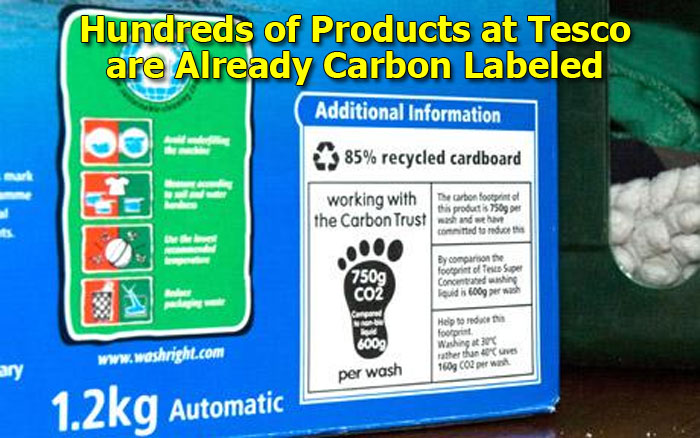The concept of "carbon labeling," in which the level of carbon emissions used to create and deliver a product are identified on those products in some way, is said to have started in 2007. While there has been little real action in the US, a recent article in the Financial Times of London says the movement has gain significant traction in the UK.
According to the article by the FT's Environment Correspondent Fiona Harvey, UK consumers purchased some $3 billion dollars worth of carbon labeled goods last year, a big number given that the first carbon labeled product appeared in March 2007 on one version of Walkers crisps (crackers).
According to the web site CarbonLabeling.org, "Carbon Labeling involves producers of goods and services to calculate and label the carbon (also known as greenhouse gas) emissions from making, using and disposing their products."
This of course is a big challenge, as it is hard enough for many companies to get their arms around their full greenhouse gas emissions from their entire supply chains in aggregate, let alone accurately determining those emissions at an individual product level.
The effort in the UK was given a boost when retail giant Tesco announced a couple of years ago its commitment to put carbon labels on every product sold in its supermarkets. More than 100 of the chain’s own-brand products now bear such labels, though that appears to be behind goals Tesco set at earlier stages of the program.
While the level of carbon labeled product sales in the UK continues to rise, it is nonetheless unclear whether that is simply a factor of more products on the shelves bearing the labels, or if consumers actually find and value the information being provided on the labels and/or consider such information when making purchase decisions.
“Carbon is an unfamiliar subject for many people, so we’re providing clear information to help our customers understand the impact of what they buy and do,” David North, community and government director at Tesco, told the Financial Times last week.
In 2009, North cited Tesco consumer research that showed 50% of Tesco customers understood what "carbon footprint" meant, compared to only 32% of its customers in 2008.
The carbon labeling effort in the UK is getting a lift as well from government support. An organization called the Carbon Trust is funded by government sources and has subsidized carbon labeling efforts such companies as Kingsmill, Tate and Lyle, Quaker Oats, and Morphy Richards.

In the US, there have been related efforts, such as The Home Depot's efforts to label some of the products its sell in its stores as "environmentally friendly" through use of Green identifiers are the products. Most expect that WalMart's in progress vendor Green Scorecarding program will result in mandates for some type of carbon or similar labeling requirements.
Supply Chain and Marketing Challenges
There are several challenges for such programs, Supply Chain Digest editor Dan Gilmore notes.
"The first is what level of precision is really required in the labeling, and how often should the data change?" he said. "If I start moving product by rail versus truck, or change suppliers for a key ingredient or component, when does that need to show up on the labeling? Would I throw away skids of packaging materials with the old and therefore wrong carbon data - at heavy cost? These are just a few of the questions."
The second challenge, Gilmore says, is a marketing one - do consumers really care?
"One thing for sure is that if competing products all score relatively the same, then it becomes a non-factor in the purchase decision," Gilmore notes. "However, there will be cost for manufacturers to continuing the data collection and labeling programs."
Do you expect to see carbon labeling programs soon? What will be the challenges and costs? And will such labels matter much to consumers in the end? Let us know your thoughts at the Feedback button below.

TheGreenSupplyChain.com is now Twittering! Follow us at www.twitter.com/greenscm
|